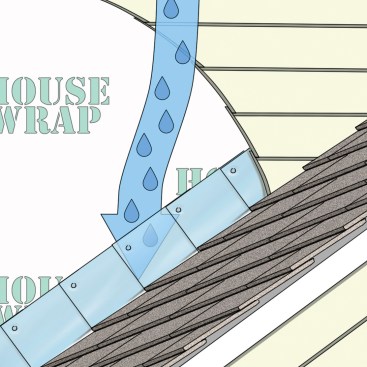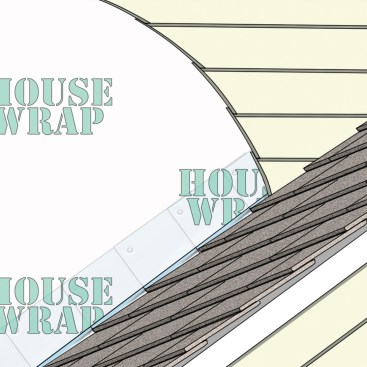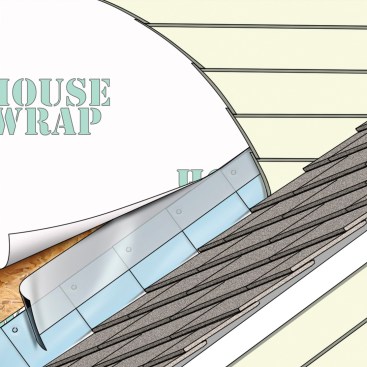Harry Whitver
Pieces of flashing are sometimes correctly lapped over each othe…
It’s a basic principle of what building science experts call “bulk water management”: rainwater that strikes a building has to be directed down and out. Gravity provides the “down”; it’s up to you to make certain of the “out.”
The problem can be trickiest when best-practice details require the interaction of two trades. That’s the case, for example, where a shingled roof meets a side wall. In production building—and even in custom work—the crews that apply the housewrap and the siding aren’t usually the same as the workers who install the roof shingles. So whose job is the step flashing at the intersection of roof and wall?
Whoever handles this joint, someone has to make sure that the materials are correctly lapped. It’s not enough for the siding material to lap down over the step flashing. The building paper or housewrap behind the siding—what the code calls the “weather-resistive barrier”—also must lap over the step flashing. Otherwise, water that reaches the paper can trickle down behind the flashing and into the structure, where it contributes to damaging rot. It’s very tough to make this part of the building dryable, so it’s worth taking extra care to ensure that the spot is drainable, so that it never needs to dry out.





